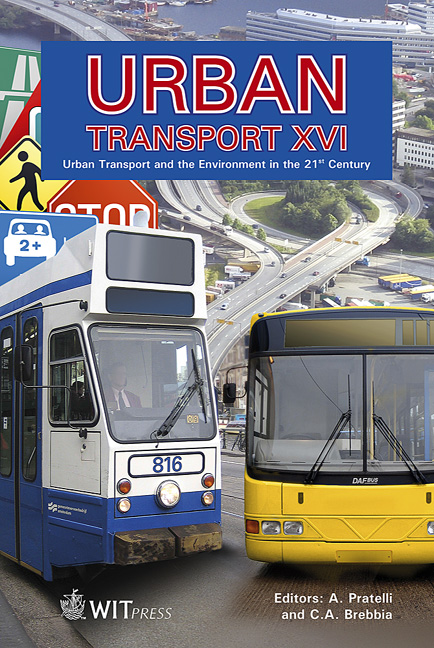Investigating The Traction System In Trains
Price
Free (open access)
Transaction
Volume
111
Pages
11
Page Range
261 - 271
Published
2010
Size
749 kb
Paper DOI
10.2495/UT100241
Copyright
WIT Press
Author(s)
A. Daadbin, Z. Biqian & J. Rosinski
Abstract
The paper looks at the traction system with the view on the interaction between the wheel and the rail. A theoretical model is proposed which includes all the components in the traction system and their dynamic influence on each other. The programming is carried out in MatLab. With flat wheel condition, the actual measurement of the rail strain during the impact is made and the stress level obtained. The results are compared with the stress levels calculated from the model. The verified model will enable one to study the system vibration/performance for any design modification on the components and the condition on the rail affecting the traction. Keywords: traction system, modelling rail-wheel interaction, flat wheel, bogie gearbox. 1 Introduction The development in the rail technology has created a relatively safe and economical transport system. The rail-wheel interface is considered to be a major part in the rail traction system. Problems such as rail head fatigues, rail surface spalling, rail surface roughness and wheel flat cracks may lead to failing contacts between the rail and the wheel resulting in an accident. As the wheels in the bogie are driven by a motor through a gearbox, it becomes necessary to analyse the whole driving system in assessing the interaction between the rail and the wheel. Any input force at the interface will influence the dynamics of the driving system which in turn would affect the behaviour of the rail-wheel contact.
Keywords
traction system, modelling rail-wheel interaction, flat wheel, bogie gearbox





